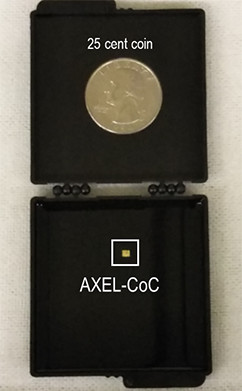[Technical report] AXEL technology
Introduction
A basic of an optical communication system is composed of three parts. (1) An optical transmitter (light source) that converts electrical signals into optical signals and sends them out, (2) an optical fiber that transmits the optical signals, and (3) an optical receiver that converts the optical signals into electric signals again.
NTT Electronics Corporation develop, manufacture, and sell optical devices and modules to apply them to optical transceivers for the realization of next-generation optical communication network systems, in cooperation with the laboratories of Nippon Telegraph and Telephone Corporation (NTT).
This report introduce AXEL technology [1]. It was developed at NTT Laboratories with the aim of increasing the optical output power and decreasing power consumption of the optical transmitter (light source) for the optical communication system. Now it is commercializing at NTT Electronics Corporation.
Optical communication system standards
Optical transmitters and receivers have traditionally been used mainly for telecom (voice communication) applications, but in recent years, the use for datacom applications is rapidly increasing. The high-speed Internet services such as FTTH (Fiber To The Home) have become widespread, and the usage patterns have diversified such as explosive spread of mobile terminals (smartphones, etc.) and the expansion of cloud services.
Standardization is progressing in the form of being driven by technical requirements for datacom applications such as PON (Passive Optical Network) used for optical access systems to homes and Ethernet used in data centers and mobile carriers. With the latest Ethernet, the standardization of a standard called "400 GbE" that enables large-capacity data transmission of 400 Gbit per second has been completed. At 400GbE, a transmission speed of 400Gbit/s is achieved by bundling 8 lanes of 50Gbit/s per lane or 4 lanes of 100Gbit/s per lane, and a standard for a maximum transmission distance of 40km has been established. Discussions are underway to standardize the even faster "Byond 400GbE" standard.
AXEL technology
The optical transmitter used in such optical communication systems must have a high optical output to increase the number of branches and the transmission distance, and at the same time, power saving is required.
In general, an optical transmitter consists of a light emitting function that injects an electrical current to generate light and a modulation function that adds electrical data signals (intensity signals of "0" and "1") to light. There are two ways to modulate the light: changing the intensity of the light and changing the phase.
The DFB (Distributed FeedBack) laser integrated an EA (Electro-Absorption) modulator that modulates the intensity, is called EML (Electro-absorption Modulator integrated with DFB Laser). The EMLs are widely used as optical transmitters because of their low power consumption (see Fig. 1- (a)).
AXEL (semiconductor optical Amplifier assisted eXtended reach EA-DFB Laser) is a technology developed by NTT Laboratories to further reduce the power consumption of this EML (see Fig. 1- (b)).

Fig. 1
Conventional EML injects a very large current into the laser to increase the emission light intensity, but most of the generated light is lost when the light intensity is modulated by the EA modulator, resulting in low power efficiency.
In AXEL, a part of the laser is integrated and connected to the emission end face of the EA modulator to form a power-efficient optical amplifier region SOA (Semiconductor Optical Amplifier) that is not affected by the loss of the EA modulator. This structure improves power efficiency.
Due to the improved modulated optical output intensity, the optical signal can maintain a clear waveform even after 100 km transmission of optical fiber. In addition, since it is possible to achieve the same modulated light output while halving the power consumption, it is possible to double the modulated light output (3 dB increase) with the same power consumption.
Taking advantage of these characteristics, AXEL technology is expected to be applied to Ethernet for high-speed and long-distance transmission. Forthermore, it is also expected to contribute to extending the length and increasing the number of branches of PON by applying it to optical access systems (see Fig. 2).

Fig. 2
Reference
- [1]
- W. Kobayashi et al., "Compact Optical Devices with Low Power Consumption," NTT Technical Review, Vol.15, No.1, Jan. 2017